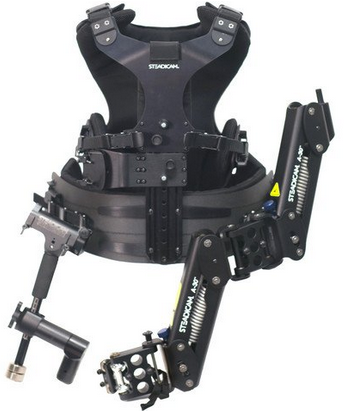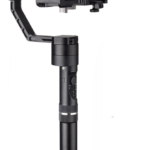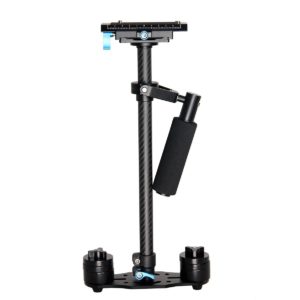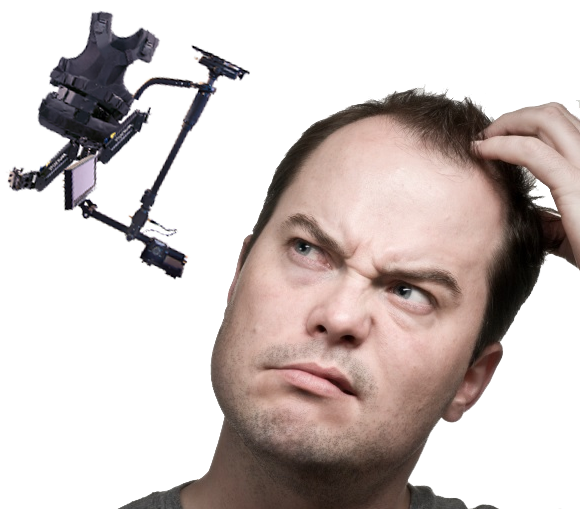
‘’How does a steadicam work?’’ Well, I’ll be completely honest with you on this one. The way a steadicam works is awesomely interesting. However, the scientific explanation behind it is crazily confusing. It’s worse especially if you don’t see the link between physics and your everyday life. In that case, I’ll try to tackle this question by keeping this post as simple as it can get.
First off…
Contents
What is a steadicam?

A steadicam is an advanced camera stabilizer that offers incredibly smooth video shots. It does this by separating the camera from the operator thereby minimizing camera shakes to negligible degrees. These units work in the same manner as typical GoPro stabilizers only that the concept is executed much more completely.
Works like the Brain
The inventor of steadicam, Garret Brown, must have tried to mimic the brain when he was designing this unit. You see, as you walk, especially on rough terrains, your body experiences lots of jolts and shocks. Literally, your eyes don’t maintain a smooth level of sight due to these disorienting motions. But you actually don’t realize this since your brain’s visual cortex smoothes out the signals to form stable visual images.
Most cameras also have built-in stabilizers that try to work in the same manner. Unfortunately, the results are miles away from what your brain does. Leave alone walking, the blood thumping in your fingers is enough to cause noticeable jarring motions in most cameras. That’s why even when you think that you are standing still, your handheld videos always have some shakes.
If you don’t use any kind of a stabilizer for your videos, you probably have tons of herky-jerky clips. They may not be an issue if you record for fun. However, if you have a commercial vlogging site, shaky videos may give your fans severe migraines as they try to follow up. This may cost you a considerable number of followers. That’s where the need for a steadicam comes in.
So, how does a steadicam work?
To make it easy for you, check out this video first.
Second, let’s understand the anatomy of a steadicam. Most steadicam rigs have 3 major components;
- The sled
- The operator’s vest-with universally fitting design
- The arm
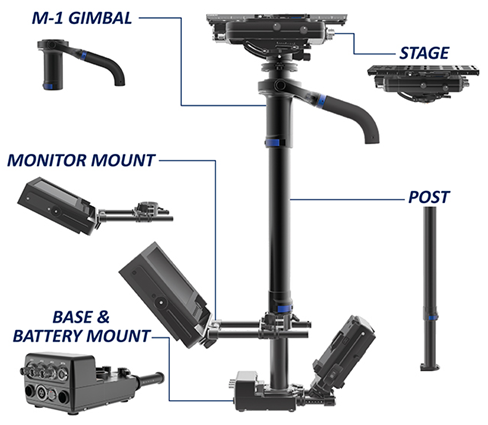
The Sled
The Sled is the assembly that includes the stage (at the top) and a base and battery mount at the bottom. These 2 are connected by a post. In some units, this pole is telescopic; it enables the operator to take high-angle shots without employing other accessories.
Note that the stage (that holds the camera) connects to the pole via a Gimbal. Simply put, this is a pivoted support that keeps the camera stable despite of any irregular movements. The camera is kept upright pivoting at the gimbal by the weight of the monitor, base, and battery mount. Crucially, the components at the bottom are fairly heavy for 2 major reasons.
First, their weight counterbalances the camera weight. Keeping more weight at the bottom ensures that the camera stays upright. Second, the combined weight of the camera and the base gives the whole unit relatively high inertial mass. As such, slight movements and shakes from the operator’s body won’t have any effect on the photographed image.
To move the camera, the operator holds the post by the gimbal handle. Worth pointing out, controlling the whole system requires very light touches. Some of the advanced units also have a wireless remote for lens adjustments. This minimizes the chances of shaking the camera even further.
Besides adding to the bottom weight, the monitor also takes over the role of the viewfinder. This is because the latter becomes practically unusable at some shooting angles.
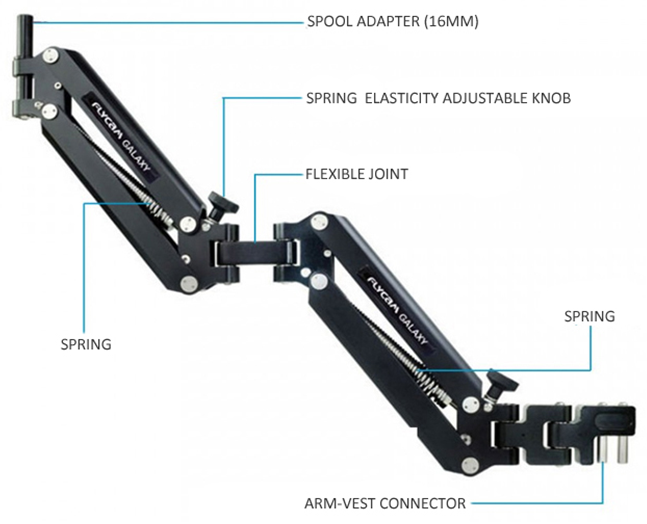
The Arm
The arm connects the Sled and the Vest. The arm comprises 2 parallelogram segments joined by a pivoting hinge. These metal blocks have a spring that connects the top and the bottom bars. Essentially, the springs work by moving the parallel bars in the opposite direction of the sled’s weight. Each of the metal blocks also has a knob. Its role is to adjust the spring in relation to the weight of the camera.
Simply put, the arm functions as a shock absorber. It smoothes out any sharp jolt so that the camera shifts the position smoothly. When properly tweaked, the arm can comfortably support the camera independent of the operator.
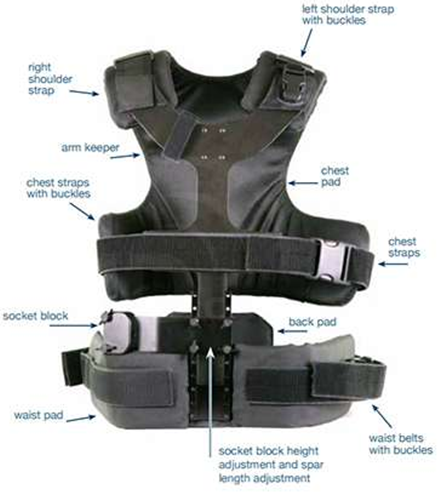
The operator’s vest
The operator’s vest is a thoughtfully designed vest that transfers the weight of the arm, the sled, and the mounted camera evenly onto your body. It’s highly adjustable design ensures that it fits different operators without any fuss.
Primary weight transfer is around the pelvis, the chest area, and on the shoulders. Notably, these regions are heavily padded. Crucially, these heavy pads help in balancing the rig. As such, you’ll be able to shift the weight from one leg to the other comfortably. They also allow the operator to stand comfortably for long irrespective of the rig’s position.
Are you in need of the best steadicam models for DSLR in 2017?
If you are looking for a reliable steadicam for your DSLR, Steadimate might be a good option for you. What I like about Steadimate is that it’s a heavy-duty gimbal designed to support most DSLRs. Another big feature about it is that you can connect it to your motorized gimbal stabilizer. Its top plate also releases quickly for fuss-free camera setup, and the vest is super easy to manipulate to your size. Moreover, you get a free case for easy portability.
 In case Steadimate is a bit on the pricier side for you, Fly 5000 is another highly reliable model. It’s almost 8 times cheaper than Steadimate but equally functional. So, if you’re just learning how to operate a steadicam, this is a superb option. Notably, it comes in a full package- vest, arm, and a sled. The vest has is lightweight and heavily padded for a comfortable fit. It also works like a charm in minimizing body shocks.
In case Steadimate is a bit on the pricier side for you, Fly 5000 is another highly reliable model. It’s almost 8 times cheaper than Steadimate but equally functional. So, if you’re just learning how to operate a steadicam, this is a superb option. Notably, it comes in a full package- vest, arm, and a sled. The vest has is lightweight and heavily padded for a comfortable fit. It also works like a charm in minimizing body shocks.
Conclusion
That’s it for now. I hope you can now answer the question, ‘’How does a steadicam work?’’ confidently, right? Mind you, you need not work in Hollywood to utilize these units. With the availability of highly affordable steadicams like the Fly 5000, you can easily rock your YouTube vlogging site with stunningly smooth videos without breaking the bank.
